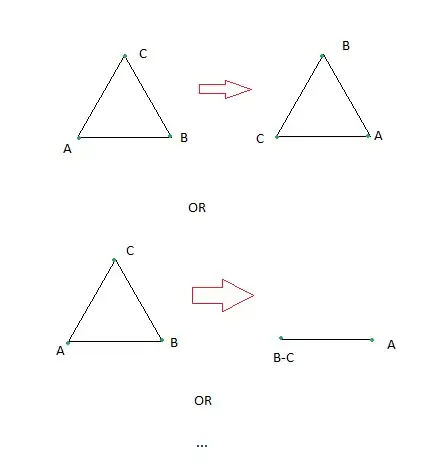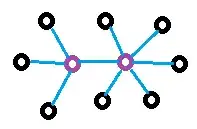There are n points located arbitrarily on the plane. Let us perform the following transformation: every point 'jumps' to the nearest one. 'A jumps to B' means that the point A coordinates after the transformation are equal to the coordinates of the point B before the transformation. If there are several points (B and C) with the same minimal distance from A (AB = AC), it can jump to any of them (A to B or A to C), so you can choose favorable option. If some points have equal coordinates after the transformation they merge to one point, effectively reducing the number of remaining points. All the jumps happen simultaneously (there are only two states of the system). What is the minimum number of points after the transformation?
Some examples:
1) 2 points A and B. The only thing that can happen is that A jumps to B and B jumps to A. Essentially, they just swap places.
2) Three points A, B, C at the vertices of an equilateral triangle. Every point can jump to one of the others. For instance, A to B, B to C, C to A (three-way swap) or A to B, B to A, C to A (B and C have merged, there are only 2 points now: B-C and A) or etc. The second option is better and, since we are looking for the minimum number of remaining points, for n=3 the answer is 2.
I was thinking about the solution with small n. It seems obvious that seven points should be arranged in the center and vertices of a hexagon. 7 points to 2 is a good ratio. Two hexagons with a common vertex produces (for 13 points) the better ratio (13 to 3), if 2 central points from the adjacent hexagons jump to the same place.
I am almost sure that there is a better way of arranging points on the plane, but currently I am out of ideas. Do you have any suggestions?


